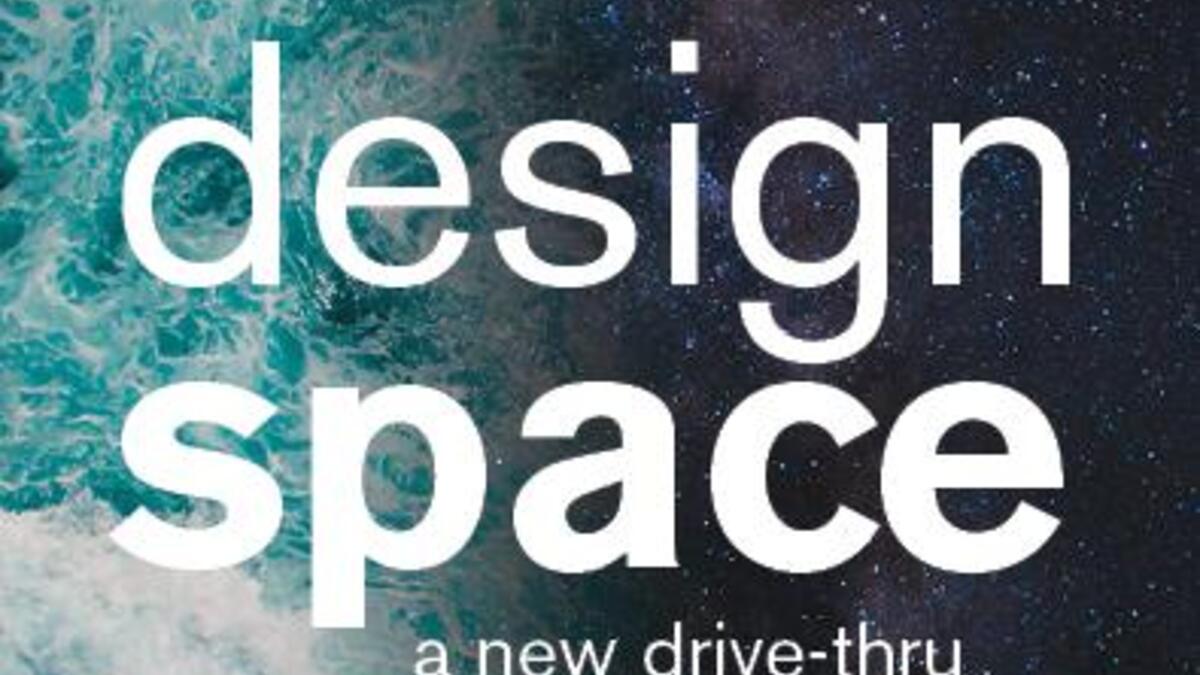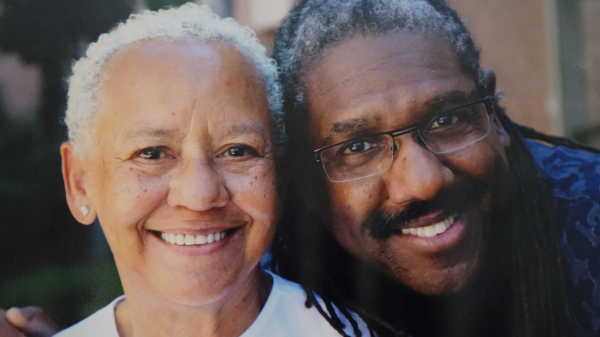ASU Gammage presents immersive drive-thru arts experience

Designspace will run April 9–25, in ASU’s Packard Drive Structure.
It was deep into 2020 when John Featherstone had a realization that stopped him in his tracks — there were students whose last year of college had been upended by the pandemic and who were soon entering his industry of design and production with little hands-on experience.
This realization was the spark for "designspace: a new drive-thru sensory experience." Designspace is a mile-long drive-thru museum built in ASU’s Packard Drive Structure that features design installations from industry professionals, renowned structural artists and students enrolled in the ASU Herberger Institute for Design and the Arts.
ASU Gammage is the presenting partner of the project, which will run April 9–25. Colleen Jennings-Roggensack, vice president for cultural affairs and executive director of ASU Gammage, said this is the type of innovative work that “makes a mark.”
“Designspace closely aligns with President Crow’s vision of fostering partnerships between industry and academia, and aligns ASU students with leading industry professionals to create a world-class experience that is remarkable, safe and fun for all,” Jennings-Roggensack said. “We are excited to connect the community to this project.”
Featherstone, partner and principal of Lightswitch Chicago and a member of the Dean’s Creativity Council at the Herberger Institute, reached out to Jacob Pinholster, associate dean of enterprise design and operations and associate professor of media design at the Herberger Institute, and proposed a drive-thru experience at ASU that “reminds people how important this kind of creative work is” and gives Herberger Institute students “a real opportunity to use absolutely state-of-the-art equipment in massive quantities to create a project.”
After hearing Featherstone’s idea for a drive-thru experience, Pinholster said it sounded like “a great opportunity for students and … for the wider community, given the sort of deficit in arts programming available during the pandemic.”
“The piece was designed entirely around giving students opportunities in a variety of different capacities,” Pinholster said. “So, the notion of being able to set aside portions of the experience was always part of the design from the start.”
Though an unexpected choice for an art installation, the uniqueness of the Packard Drive Structure as the venue for designspace only adds to what Pinholster believes will be “a giant wow factor.”
“I’m excited to see the transformation of a parking garage into something that will be a truly amazing, aesthetic experience,” Pinholster said. “And from the student perspective, I think it’s mostly about we get to do something no one’s done before with equipment that almost nobody ever gets to touch, working with professionals to create something that’s going to fill a big gap in the Valley art scene. So, there’s a lot of different really kind of wonderful benefits of doing something a little crazy.”
When brainstorming a theme for the experience, Featherstone “started to think about the way we feel about space at the moment.”
“There are very few people on the whole planet who aren’t more aware of their personal space than they’ve ever been,” Featherstone said. “At the same time, as we’re drawing in with this feeling of being insolent, small and scared and aware and hyper-sensitive … we breathe out, and there’s this expansion of the universe around us and all of these amazing things are happening in humanity’s understanding of the universe around us and reaching out, literally, to the stars. And it’s amazing, some of the student-artists have come back with things that have focused very on … the human relationship to space, some of them have come back with amazing pieces that think about the cosmic cyberspace.”
The opportunity to collaborate with industry leaders in their chosen fields has been an unparalleled experience for HIDA students, especially those who have faced “a giant gap in their experience over the past year,” according to Pinholster.
“It’s really not the same for a lot of the disciplines, and particularly people who specialize in designing space,” Pinholster said. “That just is not the same experience when you translate that to a screen. But, above and beyond just replacing something that was lost, this is also a really extraordinary opportunity to make connections with people who work at a very high level professionally since Lightswitch and the rest of the partners here are field-leading members of the profession. And then, also, to work with equipment that just isn’t available to students ever, like at any university, being able to work with high-resolution LED walls and disguise media servers, that’s just not something that occurs for students at universities, pretty much ever.”
For Xavier Nokes, a graduate student studying arts, media and engineering, the project “is unique in affording us (students) the opportunity to do real, tangible work.”
“This is a great release artistically, and being able to just see other people physically,” Nokes said. “It has also been great to do a nonacademic piece of art that will be seen by tons of people. The exposure, of course, is great, but I also think myself and the other groups really just had fun doing something new.”
Kathy Luo, a graduate student studying dance, is working as a choreographer for designspace, which she said is “the first time I’m doing this collaboration with the digital installation industry.”
“This opportunity gives me the motivation to expand my artistic vision, and connect with the different artists in an innovative way,” Luo said. “The pandemic changes the way of how people interact with each other, we are separate from each other, especially without in-person contact. I really like the idea of this project that keeps pushing me to be creative and resilient as an artist.”
As with many industries in the past year, the collaboration on designspace has shifted largely to virtual platforms and has pushed the creatives to reimagine their art for a drive-thru experience.
“We lean very, very heavily on the same technology that’s being used at the moment, which is a ton of Zoom screen-shares,” Featherstone said. “What’s interesting about this stage of the process … is it’s encouraging creative people to think about ways to communicate their ideas, which is different than they normally would. So, I think that alone is a great intellectual and creative exercise for everybody that’s involved. I think the essence of it is, we’re all being challenged in a good way to be really clear about our communication, and I think, as creative pragmatists … that’s a really great experience to learn how to be really accurate and concise, about our ideas and what we’re trying to communicate to our audience.”
For Featherstone, as well as everyone involved in the project, designspace represents the resilience of artists to continue creating during a time when people are still unable to gather and appreciate an art installation as they would prepandemic.
“I think, in many ways, at its essence, creativity is the sister of resilience,” Featherstone said. “I think to be able to work in a creative field you have to have a strong sense of resilience. You have to have a strong sense of self-belief in your work, belief in the importance of it and belief that it’s worth fighting for. And I think, at the moment, creatives … are being challenged to create something despite the pandemic, not be forced into a situation to not create because of the pandemic."
“This is something that’s true I think of artists in general, but particularly of students in the arts, is that we are more resilient sometimes than our fields and disciplines would give us credit for or be willing to accept,” Pinholster said. “I think that sometimes we get hung up on, we can’t do things because we can’t do them the way we’ve always done them, instead of just saying, ‘Well, we’re going to try and do something completely different.’ And I think this project is definitely something completely different. And to be able to say to the world, like, look, the arts are always adaptable and resilient, but that here’s really kind of a big giant billboard that says we are here and we can survive.”
As the opening of designspace nears, Featherstone is eager for people to escape their daily routine and experience the final product of months of collaboration between industry professionals and student-artists.
“This is why it’s so important to us that we did this in partnership with ASU Gammage,” Featherstone said. “ASU Gammage has a legacy of enlivening and enlightening the arts experience of people in the Valley. I can name a bunch of times where I’ve sat in my seat at ASU Gammage … and the world just fades away and you’re immersed in this amazing creative experience. That’s really hard to do in these pandemic times. We think audience members, visitors, guests, whatever you want to call them, being in their car is going to give them the opportunity to have that kind of fundamental experience, so that’s what I’m most excited to see, is people just being able to experience something, and when you pull into designspace, leave the world behind for 30, 40, 50 minutes, however long you wish to linger, and just enjoy something that’s focused on the creative legacy of everything that ASU Gammage has stood for, for 50-plus years.”
Get more information about designspace.
More Arts, humanities and education

School of Social Transformation faculty member assumes new title with NSF
School of Social Transformation faculty member and Founding Executive Director of the Center for Gender Equity in Science…

ASU's Neal Lester reflects on life, death of poet Nikki Giovanni
When Neal Lester heard on Monday that poet and activist Nikki Giovanni had died, the news hit hard.Lester, the founding director…

Learning by stepping outside
By Adriana MaestasAmid a world increasingly captivated by all things digital, more than 200 Arizona teachers have crafted…